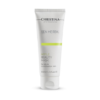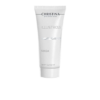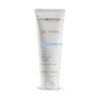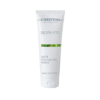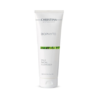
Autumn is an ideal time to reintroduce retinol or start using it for the first time. With lower sun exposure and milder UV intensity in many regions, the risk of post-retinoid pigmentation and sensitivity is reduced – making fall a smart season to begin a retinol program. However, safety and a gradual approach are essential.
Why autumn is a good time to start retinol
Retinoids increase cell turnover and can make the skin more reactive to UV; therefore, starting in months with less sun lowers the risk of complications and helps your skin acclimate with less chance of irritation or darkening.
Who should be extra cautious:
• People with thin, rosacea-prone, or atopic skin;
• Those taking photosensitizing medications;
• Pregnant or breastfeeding women (systemic retinoids are contraindicated – consult a clinician).
Step-by-step: safe reintroduction protocol
1. Choose the right product – start low. Select low concentrations (e.g., 0.1–0.3% retinol) or gentler retinoid forms. Consider alternatives like retinaldehyde, retinyl esters, or bakuchiol for very sensitive skin. 
2. Do a patch test. Apply to a small hidden area (behind the ear or inner forearm) and wait 48-72 hours. 
3. Start slow – “start low, go slow.”
• Week 1: once every 5-7 days;
• Weeks 2-3: twice weekly;
• Then every 2-3 days and gradually increase as tolerated (many derms move to every other night). 
4. Apply retinol at night to clean, dry skin. Allow it to absorb 10-20 minutes before applying moisturizer. Avoid rubbing it in aggressively. 
5. Avoid combining with strong acids or physical exfoliation during adaptation. Skip AHA/BHA peels, scrubs, and brush devices until your skin is fully adapted. 
6. Support the barrier with hydrating, soothing products. Hyaluronic acid, niacinamide, panthenol, ceramides help reduce irritation and maintain hydration. 
7. Daily sun protection is mandatory – use SPF 30+ (SPF 45 recommended if possible) every morning. Reapply during prolonged sun exposure.
What UV rays really do, why SPF matters, how to choose your protection. This guide is here to help you enjoy the sun safely – without fear, without confusion.

What to expect during the first weeks
• Common: mild redness, dryness, flaking – usually improves in 2–6 weeks with proper care.
• If severe: stop and consult a dermatologist for signs of severe irritation (blistering, significant swelling).
• Purging: temporary acne flare due to increased cell turnover may occur, typically resolving in a few weeks.
Practical tips for clients and beginners
• Buffering: mix a pea-size amount with your moisturizer on the palm to dilute and reduce irritation.
• Capsule formats control dose and preserve stability.
• Avoid using near the eye area unless formulated for it.
• Store retinol in opaque or air-tight containers away from light and heat.
Clinic and device considerations
• Avoid aggressive in-office procedures (deep chemical peels, aggressive lasers) during adaptation and for at least 2 weeks after a course of retinoid use; coordinate with a clinician for combined protocols.
• Supportive, gentle procedures (hydration masks, controlled therapies) can be used with appropriate timing and medical oversight.
Retinol is a clinically proven ingredient for anti-aging, texture, and tone, but it demands respect: test → start low & slow → protect with daily SPF → support the skin barrier. Follow this protocol and consult a dermatologist when in doubt for the best and safest results.




